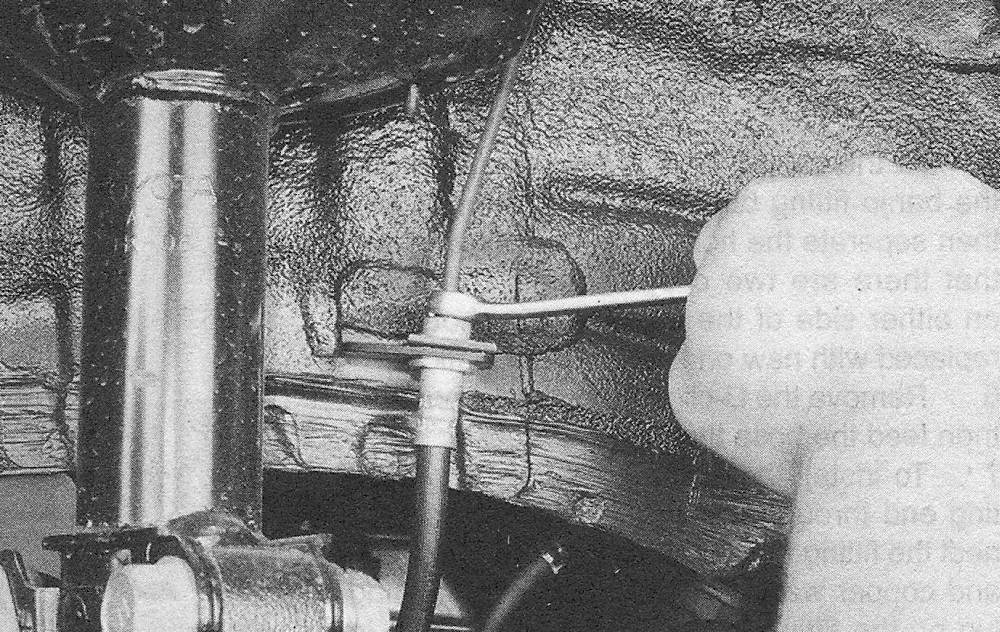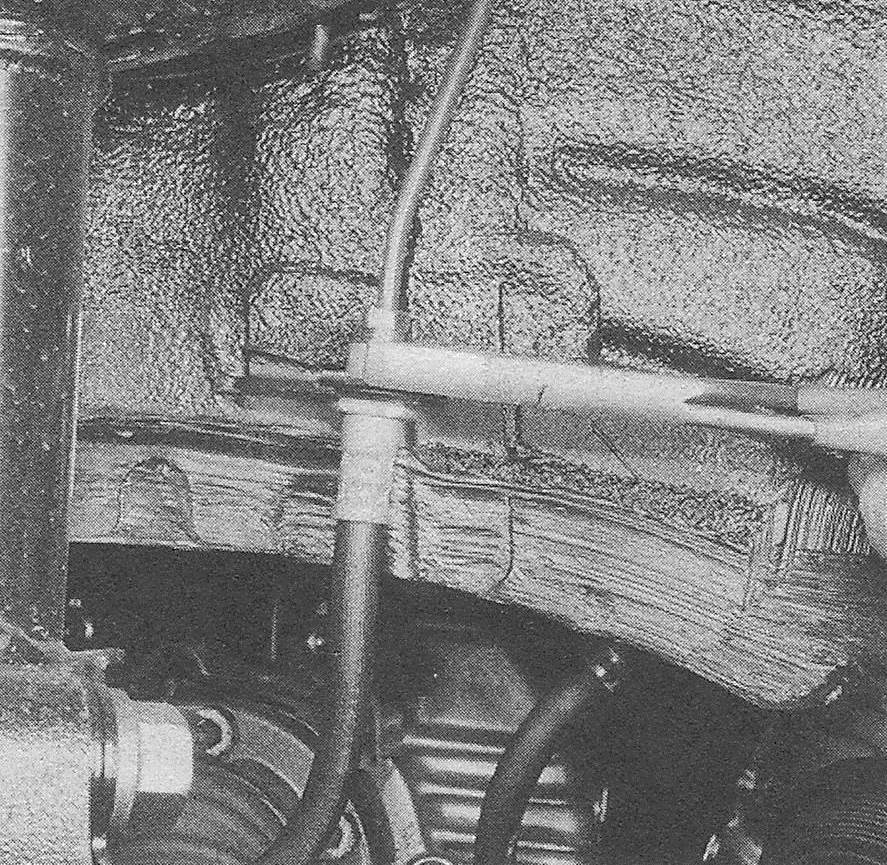Brake hoses and lines — inspection and replacement
Inspection
1. About every six months, with the vehicle raised and supported securely on jack stands, the rubber hoses which connect the steel brake lines with the front and rear brake assemblies should be inspected for cracks, chafing of the outer cover, leaks, blisters and other damage. These are important and vulnerable parts of the brake system and inspection should be complete. A light and mirror will be helpful for a thorough check. If a hose exhibits any of the above conditions, replace it with a new one.
Replacement
Flexible hoses
2. Loosen the wheel lug nuts, raise the vehicle and support it securely on jack stands. Remove the wheel.
3. At the frame bracket, unscrew the brake line fitting from the hose (see illustration). Use a flare-nut wrench to prevent rounding off the corners.
9.3 Unscrew the brake line threaded fitting with a flare-nut wrench to protect the fitting corners from being rounded off

4. Remove the U-clip from the female fit- ting at the bracket with a pair of pliers (see illustration), then pass the hose through the bracket.
9.4 Remove the brake hose-to-bracket U -clip with a pair of pliers

5. At the caliper end of the hose, remove the banjo fitting bolt (see illustration 4.6b), then separate the hose from the caliper. Note that there are two copper sealing washers on either side of the fitting — they should be replaced with new ones during installation.
6. Remove the U-clip from the strut bracket, then feed the hose through the bracket.
7. To install the hose, pass the caliper fattened through the strut bracket, then connect the fitting to the caliper with the banjo bolt and copper washers. Make sure the locating lug on the fitting is engaged with the hole in the caliper, then tighten the bolt to the torque listed in this Chapter’s Specifications.
8. Push the metal support into the strut bracket and install the U-clip. Make sure the hose isn’t twisted between the caliper and the strut bracket.
9. Route the hose into the frame bracket, again making sure it isn’t twisted, then connect the brake line fitting, starting the threads by hand. Install the clip and E-ring, if equipped, then tighten the fitting securely.
10. Bleed the caliper (see Brake hydraulic system — bleeding).
11. Install the wheel and lug nuts, lower the vehicle and tighten the lug nuts to the torque specified in Tune-up and routine maintenance.
Metal brake lines
12. When replacing brake lines, be sure to use the correct parts. Don’t use copper tubing for any brake system components. Purchase genuine steel brake lines from a dealer or auto parts store.
13. Prefabricated brake line, with the tube ends already flared and fittings installed, is available at auto parts stores and dealer parts departments.
14. When installing the new line, make sure it’s securely supported in the brackets and has plenty of clearance between moving or hot components.
15. After installation, check the master cylinder fluid level and add fluid as necessary. Bleed the brake system (see Brake hydraulic system — bleeding) and test the brakes carefully before driving the vehicle in traffic.